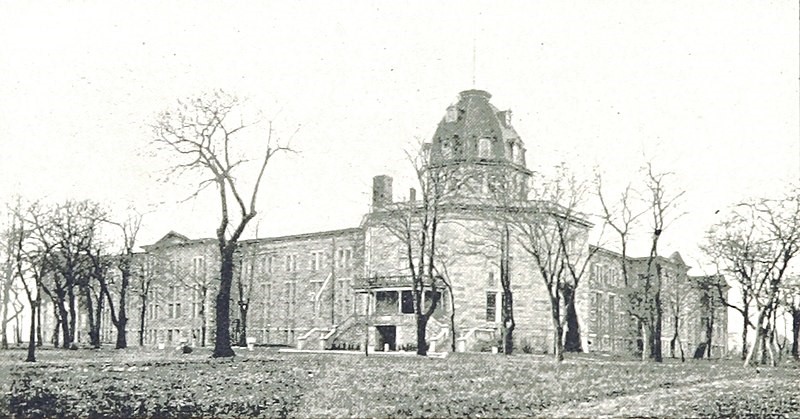Our idea of adventure today might be a road trip to a new destination, or simply getting on a terrifying roller coaster. However, what we envision never seems to include what we watch in movies, like going undercover and spying on an enemy, or traveling around the world in the least amount of days as possible. For journalist Elizabeth Cochrane Seaman, also known by her pen name Nellie Bly, these almost impossible events became realities as her career offered her these kinds of opportunities.1 Even though these assignments seem thrilling, Bly not only completed them of her own free will, but did so to help others by informing the public of various unacceptable behaviors that people were treating others to behind closed doors. There was no doubt in her mind that she would pass up an opportunity to use her gift as an exceptional reporter to liberate those being mistreated who had no voice to be heard. In one of Bly’s early assignments, she willingly allowed herself to be treated as one deemed to have a mental illness. In the 1880’s, she personally experienced the horrors that mentally ill patients went through. in order to have personal insight on the matter.
Bly was still new to journalism and in 1887 editors rarely hired women, so when Joseph Pulitzer’s New York World, a leading newspaper company at the time, offered her the opportunity to investigate an insane asylum, she did not hesitate to accept.2 Bly had so much confidence in herself that she had little doubt that she would be able to pull off the act of being insane. The asylum was located in New York on Blackwell’s Island, where it was known to be easy to get in, but nearly impossible to get out. She had read previous documents about the mistreatment of the mentally unstable and assumed they were all over dramatized; however, she knew little of what she would soon come to experience firsthand.3

Bly started this journey with seventy cents and a single promise from her editor that he would get her released after she spent ten days in the asylum on Blackwell’s Island, even if that meant exposing her identity.4 Bly first began by checking herself into a boarding house for women, and with some acting under her cover name Nellie Brown, she staged an encounter with the police. This soon led four doctors to claim she was insane, and soon after, Bly found herself riding in an ambulance on her way to Blackwell Island.
Once settled into the daily routine that doctors had for the patients at the asylum, Bly began to notice what was occurring within the facility. What happened behind the walls of this mental institution consisted of common mistreatment, such as having few heaters so everyone was freezing, forcing patients to shower in ice cold baths, and feeding them very small portions of food with repulsive tastes.5 The treatment became worse as the attendants were abusive and this misconduct was slowly integrated into part of the day-to-day procedure at the asylum, which Bly had to cooperate with.6 However, she was not alone, as she met other women in the institute that did not have any mental illnesses either, but had been checked in because of miscommunication and other various reasons.
The women Bly encountered each had their own story and explanation for how they ended up in this horrifying mental hospital. One woman specifically had no need to be there, but since she mostly spoke French, she was unable to tell the doctors her story, and because she was crying in fear of never being released, the attendants choked her. Bly recorded many cases such as this one, when women would be hurt and nobody would speak up and change it. The injures towards one of the women resulted in a black eye, and when the doctors asked about it, the nurses claimed she entered the facility with it. Many others shared with Bly the details of the abuse they encountered, including Mrs. Cotter:
Then they tied my hands and feet, and, throwing a sheet over my head, twisted it tightly around my throat, so I could not scream, and thus put me in a bathtub filled with cold water. They held me under until I gave up every hope and became senseless. At other times they took hold of my ears and beat my head on the floor and against the wall. Then they pulled out my hair by the roots, so that it will never grow in again.7

As promised, Bly’s editor got her out of the asylum ten days later, and soon after, Bly was able to share the outrage she discovered on her assignment with the world.8 Bly became that needed voice the patients in Blackwell’s Island Asylum were lacking, leading to a contribution of one million dollars per year towards caring for those with mental illnesses in New York City. This dreadful news had shocked the public and had given Bly the publicity she needed to boost her career. Yet she did not stop there. Bly continued with her passion of reporting and went undercover in places such as women’s prisons, and later traveled to the front lines during War World I.9 During Bly’s profession as a journalist she changed the views that individuals had towards the poor and helpless and how they should be treated in the hopes of having a future in which all people would be given the respect and dignity they deserve.
- Richard Ernsberger Jr., “Nellie Bly: Fearless Reporter,” American History 50, no. 2 (June 2015): 77. ↵
- MasterFILE Premier, August 2017, s.v. “Nellie Bly,” by Keira Stevenson. ↵
- Nellie Bly, Ten Days in a Mad-House (New York: Ian L. Munro, 1887), 1. ↵
- Nellie Bly, Ten Days in a Mad-House (New York: Ian L. Munro, 1887), 3. ↵
- Nellie Bly, Ten Days in a Mad-House (New York: Ian L. Munro, 1887), 13. ↵
- MasterFILE Premier, August 2017, s.v. “Nellie Bly,” by Keira Stevenson. ↵
- Nellie Bly, Ten Days in a Mad-House (New York: Ian L. Munro, 1887), 14. ↵
- Jean Marie Lutes, “Into the Madhouse with Nellie Bly: Girl Stunt Reporting in Late Nineteenth-Century America,” American Quarterly 54, no. 2 (2002): 218. ↵
- Richard Ernsberger Jr., “Nellie Bly: Fearless Reporter,” American History 50, no. 2 (June 2015): 77. ↵



77 comments
Reese Lujan
Absolutely fascinating, jaw-dropping details. I had never known about this place but the title of this story really caught my eye. Its crazy the way people in places like this treat people that are in their to get better. Their techniques such as cold ice baths and beatings are cruel and unusual punishments. It’s insane how they think it will cure mental illnesses when in reality they are just making it work. These horrific places shouldn’t even continue to be open or should be investigated on the regular.
Regina De La Parra
I have always known the atrocities that those who were put into Asylums experienced, but I never stopped to think of those people who fought to end this. I think that Nellie is a true inspiration of speaking for those who can’t, a very important rule in Journalism. She is brave and a real girl power inspiration. The article was very well written very descriptive and informative. Great job Megan!
Marlene Lozano
It is sad to think mentally ill people in Blackwell’s Island asylum were mistreated to the point where they were scared to say anything. The fact that there were people in the asylum that did not even have mental problems is astounding. Journalist like Nellie Bly that are willing to risk their lives to give people that are not able to have a voice are truly remarkable.
Alexandra Lopez
It shocked me to read that Bly was only in this “madhouse” for ten days. She’s a very brave woman to do what she did. Reading about the horrible things these mentally ill patients went through was heartbreaking. These patients are human beings just like everyone else. And knowing that Bly wasn’t the only one who didn’t actually need to be there was awful as well. The conditions in which these patients were under was completely unnecessary. Thankfully, Bly was able to get the word out. Her mission didn’t stop there, which is encouraging due to what she went through. She had true dedication to her journalism journey and with that, she uncovered many dark secrets.
Robert Rodriguez
I’ve always heard that mental asylums that would mistreat their patients was common, even in my home town there is an abandoned mental asylum where people claimed the mentally ill were mistreated and sometimes even killed. Bly definitely had some nerve to walk into a place filled with mentally ill people and suffer with them. The sharing of the heartbreaking stories of the torment these patients went through break my heart knowing they’re basically helpless.. Because Bly was so courageous she brought the outside world awareness of the mistreatment of these patients and it eventually brought a change… She was a hero to all the mentally ill
Natalia Flores
It’s awful to think that mentally ill people were treated in this sort of demeaning and abusive way. It’s even worse when people that are mentally healthy end up in places like Blackwell Asylum just because of miscommunication! I’m glad that Ms. Bly had the courage to go into a place like this, suffer the abuse just like the others, and then report on it. The abuse of the mentally ill shouldn’t be tolerated and people, not just reporters, but other doctors and nurses should stand up and stop this sort of thing. The purpose of hospitals is to heal, not to cause harm.
Jasmine Jaramillo
I have known about asylums back in the day of mistreatment of their patients and have done some research on it in the past. I’m sure in today’s age there is still mistreatment in state mental hospitals. I find stories like this interesting because the victims are people who can’t stand up for themselves. I could never understand or grasp the concept of people hurting those that needed them and where suppose to be around to take care of them. I’ve learned that sometimes the negative actions and emotions shown by workers stem from stress which is caused by the insufficient amounts of money these institutions receive to care for the patients. More people need to open up the issue and there needs to be a greater conversation about a solution to help alleviate the problem. Perhaps, more funding to mental institutions and better training programs for workers who are qualified with more skills and patience. I appreciate people like Nellie Bly who risked her life to expose the truth because it shows that we can be a voice for those who can’t speak and need our help.
Nathan Hudson
This was a well-written article, but (take this as constructive criticism) I noticed some punctuation errors and other things of that nature. They did not interfere with my reading, but one extra proof-read would have helped. Besides that, this article was fantastic you captured Nellie’s story very well and kept it interesting. Nellie shows great heroism through her actions by giving a voice to those in need. The term “Insane Asylum” has a very bad connotation, and thanks to Nellie, we know they should.
Constancia Tijerina
This article truly brings out the bravery, risks and sacrifice that many journalists go through even today to get what the people of the world should be informed of. Bly, on the other hand, took extreme risks to get what she wanted. This article portrays that part of aspect in her risks and sacrifices to do what she loved most, journalism.
Hannah Wilson
Her desire to show people the truth and be the best at her profession is very obvious. She was definitely dedicated to her job. I admire that she would put herself in harms way so that her articles could go on to help others that could not speak up or protect themselves. The way the asylum’s employees were treating people was wrong and she brought it into the publics eye. This article was excellent and was an interesting read.